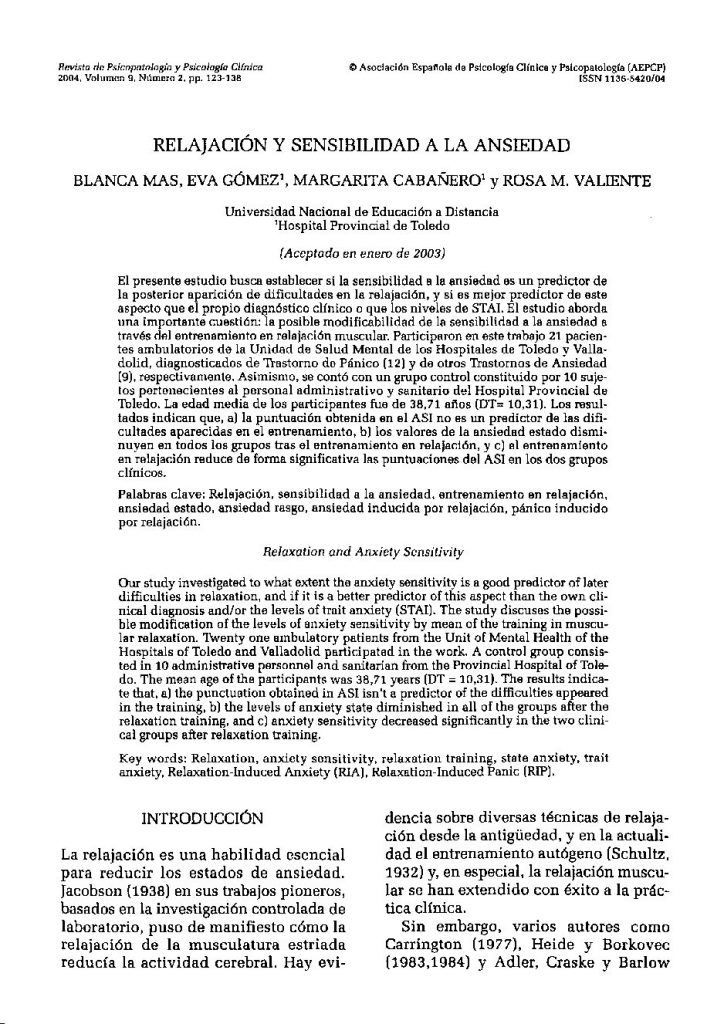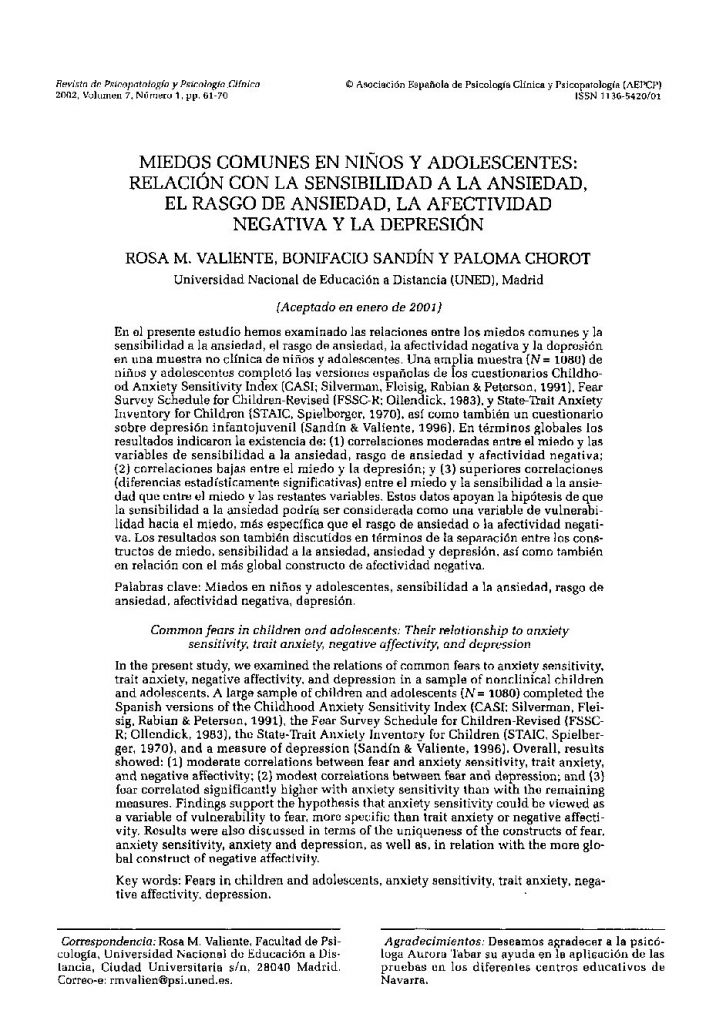Relajación y sensibilidad a la ansiedad.

- Modelo procesual del estrés en la dispepsia funcional: implicaciones para la evaluación y el tratamiento.
- Efectos a largo plazo del tratamiento cognitivo en un caso de trastorno obsesivocompulsivo.
- Relajación y sensibilidad a la ansiedad.
- Cuestionario de Pánico y Agorafobia (CAP): Características de los ataques de pánico no clínicos.
- Avatares de la Psicología Clínica, Especialidad Sanitaria de la Psicología. Informe de actividad de la Comisión Nacional (CNEPC).
- Ester Barberá e Isabel Martínez Benlloch (Coords.)(2004): Psicología y Género. Madrid: Pearson, Prentice-Hall.
Our study investigated to what extent the anxiety sensitivity is a good predictor of later difficulties in relaxation, and if it is a better predictor of this aspect than the own clinical diagnosis and/or the levels of trait anxiety (STAI). The study discuses the possible modification of the levels of anxiety sensitivity by mean of the training in muscular relaxation. Twenty one ambulatory patients from the Unit of Mental Health of the Hospitals of Toledo and Valladolid participated in the work. A control group consisted in 10 administrative personnel and sanitarian from the Provincial Hospital of Toledo. The mean age of the participants was 38,71 years (DT = 10,31). The results indicate that, a) the punctuation obtained in ASI isn’t a predictor of the difficulties appeared in the training, b) the levels of anxiety state diminished in all of the groups after the relaxation training, and c) anxiety sensitivity decreased significantly in the two clinical groups after relaxation training.
El presente estudio busca establecer si la sensibilidad a la ansiedad es un predictor de la posterior aparición de dificultades en la relajación, y si es mejor predictor de este aspecto que el propio diagnóstico clínico o que los niveles de STAI. El estudio aborda una importante cuestión: la posible modificabilidad de la sensibilidad a la ansiedad a través del entrenamiento en relajación muscular. Participaron en este trabajo 21 pacientes ambulatorios de la Unidad de Salud Mental de los Hospitales de Toledo y Valladolid, diagnosticados de Trastorno de Pánico (12) y de otros Trastornos de Ansiedad (9), respectivamente. Asimismo, se contó con un grupo control constituido por 10 sujetos pertenecientes al personal administrativo y sanitario del Hospital Provincial de Toledo. La edad media de los participantes fue de 38,71 años (DT= 10,31). Los resultados indican que, a) la puntuación obtenida en el ASI no es un predictor de las dificultades aparecidas en el entrenamiento, b) los valores de la ansiedad estado disminuyen en todos los grupos tras el entrenamiento en relajación, y c) el entrenamiento en relajación reduce de forma significativa las puntuaciones del ASI en los dos grupos clínicos.




